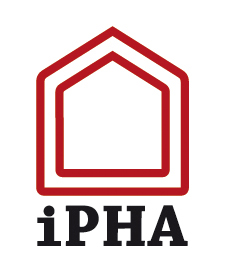You are here
Guidelines for the usage of prefabricated façade systems
Prefabricated timber framed façade systems
Clemens Le Levé, University of Innsbruck, Clemens.Le-Leve@uibk.ac.at
Thomas Badergruber, University of Innsbruck, Thomas.Badergruber@uibk.ac.at
Anton Kraler, University of Innsbruck, Anton.Kraler@uibk.ac.at
Michael Flach, University of Innsbruck, Michael.Flach@uibk.ac.at
1. Prefabricated timber framed façade system:
The thermal refurbishment of the building stock is one of the most fundamental challenges of sustainable urban development. Particularly the use of natural and local materials gets an increasing relevance, regarding the embodied energy. Systematised solutions for thermal refurbishment with prefabricated and integrated façade systems such as the E.T. (ecological timber framed) façade system and the Sherpa EFcon façade system connector are developed at the Unit of Timber Engineering of the University of Innsbruck.
The renovation by using prefabricated and integrated façade systems represents an interesting alternative to ETICS (external thermal insulation composite systems) and consists of several advantages, as the high precision in prefabrication and assembly off-site or the short construction time on-site. Also the possibility to integrate windows, insulation, ventilation and solar modules into the façade elements and the fact that no scaffolding is needed illustrate further benefits of this renovation method. The main fields of application are especially schools and multi-storey residential buildings, where large scaled and repetitive elements are used. The concept of this renovation method is well described in the research project TES EnergyFaçade [1] and several objects in Germany, Austria and Switzerland were already refurbished using this renovation method.
Figure 1: Prefabricated façade element for the thermal renovation of a farmhouse in Trins [2, 3]
Photo Source: Flach, M; Eibl, R.
The importance of the use of natural renewable materials increases, regarding the embodied energy and the use of local resources. But concerning economic aspects, their use can only be competitive, if short assembly time and a maximum in precision through integrated prefabrication are ensured. Therefore the logistics have to be coordinated in regard to working steps as digital building survey, planning of the façade elements with integrated HVACR, computer controlled joinery, prefabrication and mounting of the façade elements on the existing building.
Experiences made in project Sinfonia and Expert Workshops show that there are still facts which lead to decisions of building promoters to use ETICS instead. The main reasons are costs and business as usual on one side, but also the lack of systematised solutions for different applications on the other side. Therefore the Unit of Timber Engineering of the University of Innsbruck is developing systematised solutions for refurbishments with prefabricated timber framed façade elements.
2. The E.T. Façade System:
Conventionally the cladding of prefabricated façade systems consists of a ventilated façade. To reduce costs of the prefabricated façade system the E.T. façade system [4] is developed, where the amount of layers and the amount of work on-site is reduced to a minimum. It can be entirely prefabricated, including the external render system, allows a fast assembly on-site and its fire behaviour is classified.
The reduction of costs plays an essential role and is provided by
- scalability and replicability
- holistic prefabrication
- reduction of layers
- simple structure
- systematised joint details
- systematised fixation possibilities
- fast and easy assembly
- classified fire behaviour
- disassembly and exchange
- easy recycling
The E.T. façade system consists of timber framed elements with a non-rear-ventilated external render-baseboard and an external render system and is entirely prefabricated. Two typical wall structures of the façade system are shown in Figure 2, a rear-closed (a) and a rear-open element (b).

Figure 2: Typical wall structures of the E.T. façade system, (a) rear-closed element, (b) rear-open element [4]
Source: Le Levé, C.
The adaption layer of the rear-closed element consists of a ductile insulation material, which is fixed on the rear panel in prefabrication or a blow-in insulation, which is filled on-site. The blowing-in procedure of the cellulose can be done storey-wise according to the mounting process or by the window sills and reveals. To reduce costs and layers and also for building physic reasons it is possible to omit the rear panel.
For an easy and fast mounting process special joint solutions are developed. These vertical and horizontal joints have to provide watertightness, transmission of loads, absorption of expansions and fire safety. In general the horizontal joint is placed in the area of the ceiling, but can also be placed corresponding to the building geometry and architectural wishes. The horizontal joint, which consists of a tongue and groove system, provides the transmission of horizontal loads between the upper and lower façade element. For fire safety reasons the joint is backed by an incombustible panel. An additional horizontal board provides a horizontal fire separation between the elements.
The watertightness is achieved by sliding joint profiles, which are developed for this application by using standard profiles and modified profiles. A watertight seal, stuck on the profiles ensure watertightness (Figure 3).
Photo Source: Badergruber, T.; Le Levé, C.
3. Fire Safety:
The façade system consists of ecological and renewable but combustible materials. So the fire safety plays an important role. The Unit of Timber Engineering performed in collaboration with IBS (Institut für Brandschutztechnik und Sicherheitsforschung) in Linz several fire behaviour and fire resistance tests to proof the fire safety of the prefabricated façade system (Figure 4). The fire behaviour of the E.T. façade system is now classified and allows its application on buildings of class 4 and 5 up to a fire escape level of 22 m as a standardised system using renewable materials as wood and cellulose.
Photo Source: Badergruber, T.; Le Levé, C.
Further fire tests were performed with an adapted prefabricated façade system to show that prefabricated timber framed façade elements can also be implemented on high-rise buildings. In this case mineral wool was used as insulation material and the external layer of the timber frame construction consist of gypsum fibre boards. And the rear ventilated cladding system has to be approved for high-rise buildings [5].
Further information about fire tests and classification reports can be obtained at the Unit of Timber Engineering of the University of Innsbruck.
4. The Sherpa EFcon Façade System Connector:
The façade elements are self-supporting and can be mounted on the existing building in different ways. Depending on the building structure and materials the element might be storey wise hanging on the substructure or standing at the bottom or is storey wise standing. Building geometry plays an important role on the application of the façade elements. It influences the choice of the orientation (horizontally or vertically) as well as the possibilities of fixation. Especially the roof, the balcony, the openings of the building and the building foundation play a central criterion.
The “Sherpa EFcon” Façade-System-Connector is developed at the Unit of Timber Engineering of the University of Innsbruck to get a standardized and multifunctional mounting system (Figure 5) [3]. The company Vinzenz Harrer GmbH has recently included the connector in its product portfolio.
Photo Source: Le Levé, C.; Flach, M.
An important factor is the possibility to lead vertical and horizontal loads storey wise in the existing building, so that at the bottom no concentrated load introduction occurs. Thereby the application of prefabricated façade elements gets more flexible. A central role plays the accessibility of the connector during assembly. Its position on the upper part of the façade element and a detailed consideration of dimensions allow the handling from the top of the respective element (Figure 5, right). It is fixed on the reinforced concrete floor slab, pillars or masonry walls with concrete screws or injectable adhesive anchors. It is able to absorb tolerances in all three directions to compensate an uneven existing wall, inaccuracies in building survey or in prefabrication as well. The most essential requirements of the connector are listed in the following itemisation:
- Fast and easy assembly
- Absorption of tolerances in all directions
- Bearing of vertical and horizontal loads
- Accessibility
- For different building types and materials
- Multifunctional application
- Avoidance of thermal bridges
- Systematised solution leads to cost reduction
5. Conclusion:
A standardised solution for thermal refurbishments with ecological prefabricated façade systems is developed in order to reduce the construction time, the disturbance of inhabitants and costs. For a wide range of application possibilities up to mid-rise buildings the fire behaviour of the E.T. façade system is classified. Thereby it is permitted to use variable products for external and internal panels, render systems or insulation, so it is not depending on individual producers. Further investigations on fire safety shall contribute to use prefabricated façade systems even on high-rise buildings.
The presented joint details allow the prefabrication of the entire façade element, even including the external render system and require no additional work on-site or scaffolding. In combination with the Sherpa EFcon Façade System Connector a fast and easy, modular construction system is ensured. The assembly on-site of the prefabricated, pre-rendered and integrated elements can be done in few days. An implemented refurbishment project, offered the opportunity to attempt, analyse and demonstrate the newest developments and to prove the user-friendly feasibility.
Literature
[1] Ott, S.; Kaufmann, H.; Winter, S.; Lattke, F.: TES EnergyFaçade prefabricated timber based building system for improving the energy efficiency of the building envelope, final report. München, 2010.
[2] Le Levé, C.; Badergruber, T.; Flach, M.: Ökologisch sanieren mit einem neuen Fassadensystem am Beispiel des Mayrhofs in Trins. In: Passivhaustagung 2018. München, 2018.
[3] Le Levé, C.; Badergruber, T.; Kraler, A.; Flach, M.: Neue Wege in der thermischen Fassadensanierung und ein Systemverbinder zur schnellen und einfachen Montage. In: Bauingenieur 93 (2018), Ausgabe 7/8-2018. Springer VDI Verlag, Düsseldorf 2018.
[4] Le Levé, C.; Badergruber, T.; Kraler, A.; Flach, M.: Ökologisches Sanieren mit verputzten, vorgefertigten Fassadenelementen in der Gebäudeklasse 5 mit mehr als 6 Vollgeschoßen. Endbericht, Innsbruck 2016.
[5] Le Levé, C.; Badergruber, T.; Kraler, A.; Flach, M.: Vorgefertigte Fassadensysteme in Holzbauweise bei einem Fluchtniveau von mehr als 22 m. Endbericht, Innsbruck 2018.





